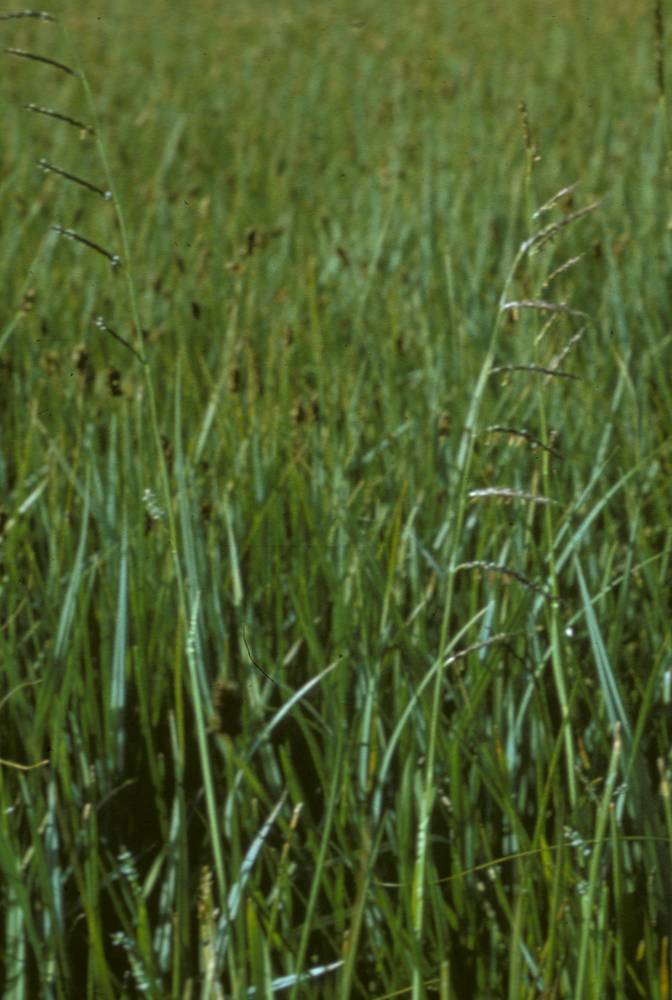Pleuropogon hooverianus
Pleuropogon
semaphoregrass
cauline;
sheaths closed;
ligules membranous;
blades flat to folded;
tips mucronate to awned.
terminal racemes;
disarticulation above the glumes and beneath the florets.
laterally compressed, with 5–20(30) florets.
unequal to subequal; shorter than the adjacent lemmas;
lower glumes 1-veined;
upper glumes 1–3-veined.
rounded, glabrous.
7(9)-veined;
veins parallel;
margins and tips scarious;
tips entire or emarginate, sometimes awned;
lemma awns; if present; straight.
with 2 keels; the keels winged and with 1–2 scabrous awns or smooth; flat, triangular appendages.
3.
Pleuropogon hooverianus
Pleuropogon
Circumboreal. 5 species; 2 species treated in Flora.
Semaphore grasses are recognized by their long spikelets attached directly to the inflorescence axis. The palea keels are winged and have awns or appendages. The leaf tips may have small points or even small awns.
Barbara Wilson, Richard Brainerd, Nick Otting
- Local floras:
CA,
OR,
WA
- Local Web sites:
CalFlora,
CalPhotos,
Flora NW,
PNW Herbaria
WildflowerSearch
iNaturalist (observations)
USDA Plants Database
- LBJ Wildflower Center
- SEINet
- Plants of the World Online
- Encyclopedia of Life
- Wikipedia
- Google Image Search


